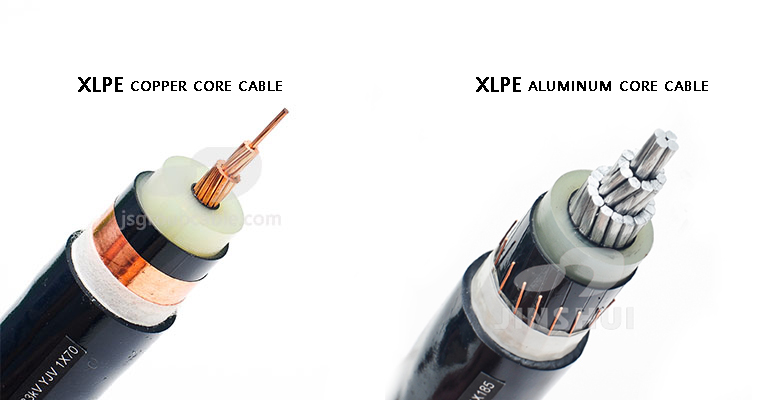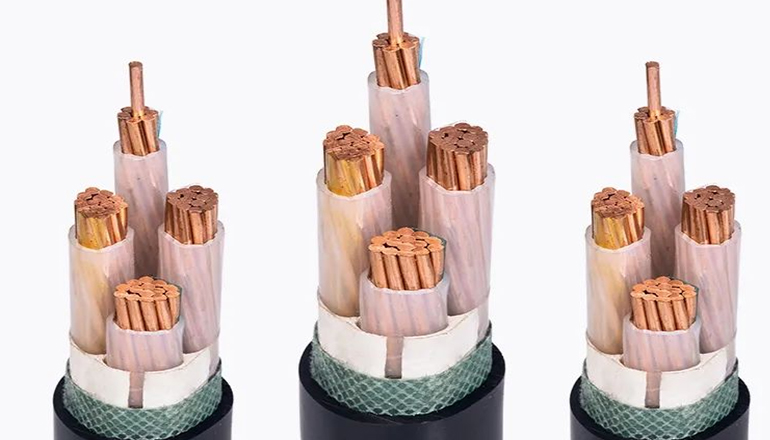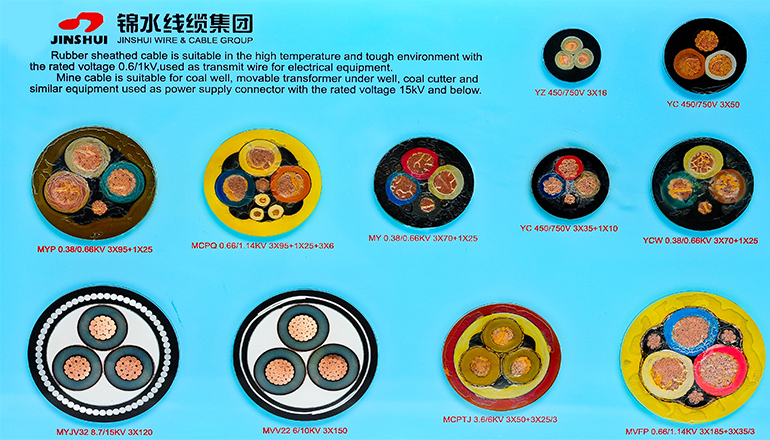- Offices Time:24 Hours Online
- Email:[email protected]
- WhatsApp:+8618339938759

Posted on October 12, 2022
The difference between copper core cable and aluminum core cable
Copper core cables and aluminum core cables are widely used and have their own advantages. In order to help you better complete cable selection, we introduce the characteristics of copper core cable and aluminum core cable respectively, and analyze and summarize the difference between the two from a professional perspective:
1.Copper core cable
(1) High strength
The allowable stress at room temperature is 7-28% higher than that of copper. Especially the stress at high temperature, the difference between the two is even greater.
(2) Low resistivity
The resistivity of aluminum core cable is about 1.68 times higher than that of copper core cable.
(3) Good ductility
The elongation rate of copper alloy is 20-40%, the elongation rate of electrical copper is more than 30%, while that of aluminum alloy is only 18%.
(4) Large carrying capacity
Due to the low resistivity, the copper core cable with the same cross-section is about 30% higher than the allowable current carrying capacity than the aluminum core cable.
(5) Low energy consumption
Due to the low resistivity of copper, it is obvious that copper cables have lower power losses compared to aluminum cables. This is conducive to improving the utilization rate of power generation and protecting the environment.
(6) Good stability and corrosion resistance
The copper core is resistant to oxidation and corrosion, while the aluminum core is susceptible to oxidation and corrosion.
(7) Convenient construction
a.The copper core is flexible and the allowable curvature radius is small, so it is convenient to bend and pass through the pipe;
b.The copper core is fatigue-resistant and not easily broken after repeated bending, so the wiring is convenient;
c.Because of the high mechanical strength of the copper core, it can withstand large Mechanical tension brings great convenience to construction and laying, and also creates conditions for mechanized construction.
(8) Low voltage loss
Due to the low resistivity of the copper core cable, the same current flows through the same section. The voltage drop of copper core cable is small. Therefore, the same power transmission distance can ensure higher voltage quality; in other words, under the condition of allowable voltage drop, the copper core cable power transmission can reach a longer distance, that is, the power supply coverage area is large, which is conducive to the planning of the network and reduces the Set number of power supply points.
(9) Anti-fatigue
Aluminum is easy to break after repeated bending, but copper is not. In terms of elasticity index, copper is also about 1.7-1.8 times higher than that of aluminum.
(10) Anti-oxidation and corrosion resistance
The connector of the copper core cable has stable performance and will not cause accidents due to oxidation. The joints of aluminum core cables are often unstable due to oxidation, which increases the contact resistance and generates heat, resulting in accidents. Therefore, the accident rate is much larger than that of copper core cables.
(11) Low heating temperature
Under the same current, the calorific value of the copper core cable with the same cross section is much smaller than that of the aluminum core cable, which makes the operation safer.
Common copper core cables include XLPE insulated copper core cables and PVC insulated copper core cables.
2.Aluminum core cable
(1) Conductivity
In order to reduce energy loss and voltage drop in the cable conductors, the conductors of power cables are generally made of copper and aluminum with high conductivity. Under the premise of the same conductor cross-sectional area, the electrical conductivity of copper core power cable is higher than that of aluminum core power cable.
(2) Processing performance
Copper has good ductility and strong mechanical properties, so when the single wire is compressed, even if the degree of deformation is large, the conductor of the copper core power cable will not break. However, aluminum has poor mechanical properties. When the wire is twisted, if the compression coefficient is high, the wire will have burrs, broken wires, or even broken wires.
(3) Economic performance
In the case of the same current carrying capacity, the cross-sectional area of the aluminum core cable is about 1.5 times that of the copper core cable, and the corresponding line protection costs and civil construction costs will also increase. Therefore, as a permanent power distribution, considering the safety of operation, it is recommended to use copper core power cables when financial conditions permit.
Common aluminum core cables include XLPE insulated aluminum core cables and PVC insulated aluminum core cables.
3.The difference between copper core cable and aluminum core cable
(1) Low resistivity
The resistivity of aluminum core cable is about 1.68 times higher than that of copper core cable.
(2) Good ductility
the ductility of copper alloy is 20~40%, the ductility of electrical copper is more than 30%, and the ductility of aluminum alloy is only 18%.
(3) High strength
the allowable stress at room temperature, copper is 7~28% higher than that of aluminum. Especially the stress at high temperature, the difference between the two is even greater.
(4) Anti-fatigue
aluminum is easy to break after repeated bending, but copper is not easy. In terms of elasticity index, copper is also about 1.7~1.8 times higher than that of aluminum.
(5) Good stability and corrosion resistance
The copper core is anti-oxidation and corrosion-resistant, while the aluminum core is susceptible to oxidation and corrosion.
(6) Large current carrying capacity
Due to the low resistivity, the copper core cable with the same cross-section is about 30% higher than the allowable current carrying capacity of the aluminum core cable.
(7) Low voltage loss
Due to the low resistivity of the copper core cable, the voltage drop of the copper core cable is small when the same current flows through the same section. The same power transmission distance can ensure higher voltage quality; under the condition of allowable voltage drop, the copper core cable can transmit power to a longer distance, that is, the power supply coverage area is large, which is conducive to network planning and reduces the number of power supply points. .
(8) Low heating temperature
Under the same current, the heating value of the copper core cable with the same section is much smaller than that of the aluminum core cable, making the operation safer.
(9) Low energy consumption
Due to the low resistivity of copper, it is obvious that the power loss of copper cables is lower than that of aluminum cables. This is conducive to improving the utilization rate of power generation and protecting the environment.
(10) Anti-oxidation and corrosion resistance
The performance of the connector of the copper core cable is stable, and no accident will occur due to oxidation. The joints of aluminum core cables are often unstable due to oxidation, which increases the contact resistance and generates heat, resulting in accidents. Therefore, the accident rate is much larger than that of copper core cables.
(11) Convenient construction
the copper core is flexible and the allowable curvature radius is small, so it is convenient to bend and pass through the pipe; the copper core is anti-fatigue, and it is not easy to break after repeated bending, so the wiring is convenient; the mechanical strength of the copper core is high and can withstand The larger mechanical pulling force brings great convenience to the construction and laying, and also creates a mechanized construction.
In summary, copper core cables have the advantages of low resistivity, good ductility, high strength, fatigue resistance, good stability, and large current carrying capacity. They have outstanding advantages in cable power supply, especially in the field of underground cable power supply. However, aluminum core cables are cheaper than copper core cables, light in weight and convenient for transportation, Therefore, it is a must-selected material for high-voltage, large-section and long-span overhead transmission lines. Therefore, appropriate products should be selected according to the application and the characteristics of different materials.
Post categories
Most Popular Posts
-
The 136th Canton Fair welcomes you to participate!
October 12, 2024 -
High temperature cable introduction
July 26, 2024 -
Kenya Power and Energy Exhibition 2024
June 11, 2024 -
Introduction of rubber sheathed cable
June 5, 2024





